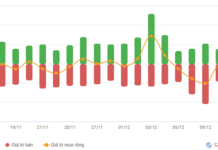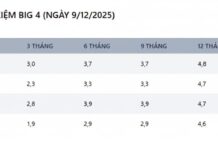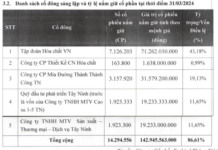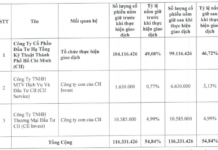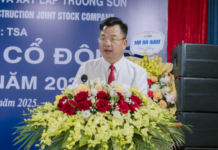
The phenomenon of late marriage is prevalent in countries like South Korea, China, and Japan. According to government statistics from these countries, the average age of first marriage in Japan is 31.1 for men and 29.4 for women. In South Korea, the average age rises to 34 for men and 31.5 for women.
Guardian and The New York Times reported that young women in Chinese cities are often uninterested in discussions about marriage and children. In late 2022, a trend emerged on Chinese social media with posts tagged #thelastgeneration, where young people declared their reluctance to marry and have children, considering themselves the “last generation” to do so.
This trend is not unique to major economies like South Korea, Japan, and China; it is also prevalent in Southeast Asian countries, including Vietnam. According to the General Statistics Office of Vietnam, the average age of first marriage in the country in 2023 was 27.2 years old, a 7.9% increase compared to five years ago. Specifically, the average age for men was 29.3, while for women, it was 25.1. Urban residents tended to marry later, with an average age of 28.6, compared to 26.3 in rural areas.
Among the 63 provinces and cities in Vietnam, Ho Chi Minh City had the latest average age of first marriage, reaching 30.4 years old, a 2.9-year increase from five years ago. Ba Ria-Vung Tau province followed closely with an average age of 29.3. In Hanoi, the capital city, the average age of first marriage in 2023 was 27.9, the highest in the Red River Delta region and the 13th highest in the country, 2.5 years earlier than Ho Chi Minh City.
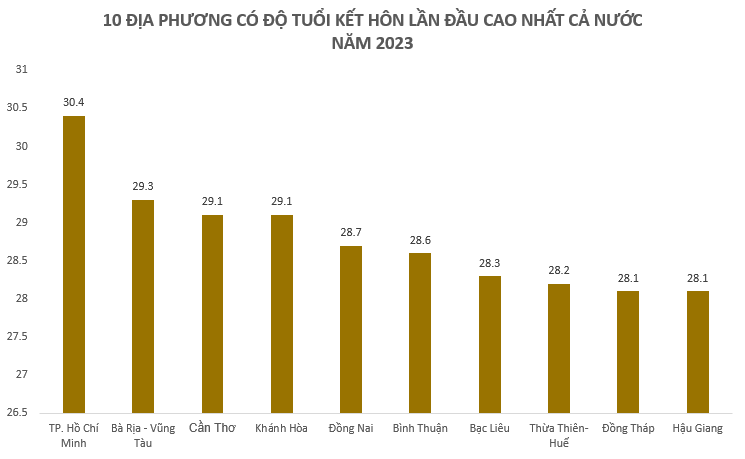
Over half of the top 10 localities with the latest average age of first marriage are in the Southeast and Mekong Delta regions. (Source: General Statistics Office)
The General Statistics Office attributed this trend to higher urbanization rates and improved economic, cultural, and social conditions. In contrast, the earlier average age of first marriage in the Northern Midland and Mountainous regions was influenced by the large proportion of ethnic minority groups with distinct cultural and customary practices.
According to the Population Bureau, Vietnamese youth are delaying or foregoing marriage due to busy work schedules, financial difficulties, career pursuits, and the inability to find ideal partners.
For instance, Nh. Phuong (29 years old), a resident of Ha Dong district in Hanoi, shared that she hasn’t considered marriage yet as she feels financially and mentally unprepared. “I don’t feel ready to commit to a relationship at this point in my life because I want to dedicate more time to myself and my family,” she said.
Ha D. (27 years old, Hanoi) echoed a similar sentiment: “I’m currently studying and working, so I hardly have any free time to get to know someone. I believe that I should focus on taking care of and developing myself, so I don’t plan on getting married for at least the next three years.”

The trend of late marriage and the increasing number of people choosing to remain single are considered the main reasons for the declining birth rate.
According to the World Bank, with a gradually decreasing fertility rate and increasing life expectancy, Vietnam entered the aging society phase in 2015 and is projected to become an aged society by 2035, making it one of the fastest-aging countries in the world.
“While Vietnam currently enjoys a golden population structure, this window of opportunity is closing as the pace of population aging accelerates,” the World Bank stated.
The General Statistics Office reported that the total fertility rate in Vietnam in 2023 was 1.96 children per woman, the lowest ever recorded, and it is expected to continue declining in the coming years. Currently, two out of six socio-economic regions have fertility rates below the replacement level, namely the Southeast and Mekong Delta regions, with women in the Southeast having an average of 1.47 children, the lowest in the country.
Data from provinces and cities shows that 21 out of 63 localities have low fertility rates, accounting for about 39.37% of the country’s population. Most of these localities are in the key economic regions in the south, where urbanization and economic growth are rapid.
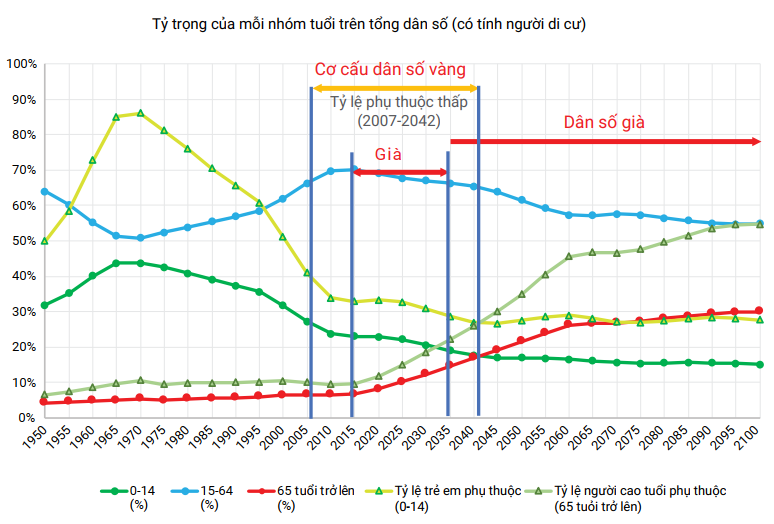
At an international conference on population policies and solutions to address the low birth rate, experts warned that without breakthrough socio-economic and population policies, Vietnam’s birth rate would continue to decline, following the path of China, South Korea, and Japan.
In 2022, the United Nations even predicted that if the birth rate continued to drop, Vietnam’s population would plummet to 3.6 million by the year 2500, equivalent to the current population of Nghe An province.
According to experts, while the population decline will not immediately impact the economy, it indicates an unsustainable growth model, especially for countries that rely on their competitive advantage of abundant labor.
“The labor shortage could lead to the bankruptcy of the economic development model, which is based on a large workforce,” shared a lecturer from Tsinghua University (China) with The Guardian.
Specifically, the impact of population aging on GDP growth depends on how and to what extent aging affects the size and productivity of the workforce, the intensity of capital use, and the rate of return on capital, consumption, and asset accumulation.
World Bank experts predict that as Vietnam transitions to an aging population structure, the country’s population growth rate in 2020–2050 will slow by 0.9 percentage points compared to the previous 15 years. Additionally, meeting the needs of an aging society will incur additional costs ranging from 1.4% to 4.6% of GDP, increasing fiscal pressure.

To address this issue, a region in China offered a reward of 1,000 yuan (approximately 138 USD) to newlywed couples if the bride was under 25 years old, aiming to encourage “marriage and childbirth at the appropriate age.”
In South Korea, which has the world’s lowest birth rate and is projected to see its population halve by 2100, successive governments have spent about 380 trillion won (approximately 283 billion USD) over the past 20 years to tackle the aging society and boost the birth rate.
Japan once considered a “crazy” project, proposing to spend up to $26 billion on underground cargo conveyors as the country’s population declined by more than 2,000 people per day, risking a shortage of delivery personnel.
In Vietnam, at a workshop on the demographics of Asia-Pacific economies held in Hanoi in early August, Prof. Dr. Nguyen Thien Nhan, a deputy of the 15th National Assembly and former Secretary of the Ho Chi Minh City Party Committee, suggested reducing the working hours of employees (8 hours/day, 40 hours/week) to give them more time to find a life partner, care for their children and families, and pursue personal interests.
Additionally, Decision 588/QD-TTg, issued in 2020, approves the Program for Adjusting Birth Rates in Line with Regions and Target Groups by 2030. This decision instructs local governments to implement measures to support couples in having two children. These measures include piloting marriage and family counseling services, developing matchmaking clubs, providing pre-marital health consultations, and encouraging men and women to marry before the age of 30 and have their second child before the age of 35.
Currently, according to the Appendix issued with Decision 588/QD-TTg, 21 provinces and cities with low birth rates will provide rewards or support in cash or kind to women who give birth to their second child before the age of 35. These localities include Ho Chi Minh City, Dong Thap, Hau Giang, Ba Ria-Vung Tau, Binh Duong, Khanh Hoa, Long An, Bac Lieu, Tay Ninh, Soc Trang, Ca Mau, Dong Nai, Binh Thuan, Tien Giang, Can Tho, Vinh Long, An Giang, Ben Tre, Da Nang, Quang Ngai, and Kien Giang.
The Economic and Social Impact: Experts Concerned Over Proposed New Consumption Tax
The proposed tax on sugary drinks has sparked a heated debate, with a wave of opposing views. While the policy aims to curb obesity rates, experts and studies reveal a host of socioeconomic repercussions that warrant a comprehensive assessment.
The New Tran De Industrial Park: Unlocking Economic Growth with an Initial Investment of 800 Billion VND
Approved for investment in 2020, with an expected completion date and investor attraction by the end of 2021, the Tran De Industrial Zone has faced significant delays over the years, impacting the local economy and society. As of now, the project has only achieved 65% of its total investment, equivalent to approximately VND 800 billion.
Seeking Feedback on the Impact of the Water Extraction Project
The government has implemented a regulation that requires consultation with community representatives and relevant organizations or individuals regarding the impact of water extraction projects. This process ensures that the potential effects of such projects on the local community and environment are carefully considered and addressed. By seeking input from those directly affected, the government aims to make informed decisions that balance the needs of all stakeholders involved.
Congress Approves Major Investment in Highway Section Connecting Gia Nghia and Chon Thanh
The Government proposed to the National Assembly at the 7th Session to decide on the investment policy to construct the North-South Expressway, the West section from Gia Nghia (Dak Nong) to Chon Thanh (Binh Phuoc).




